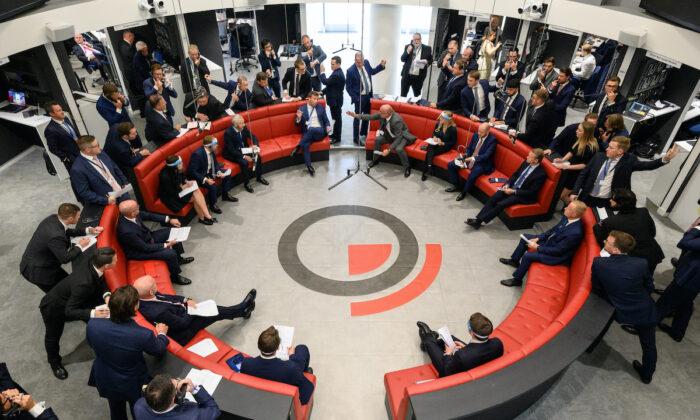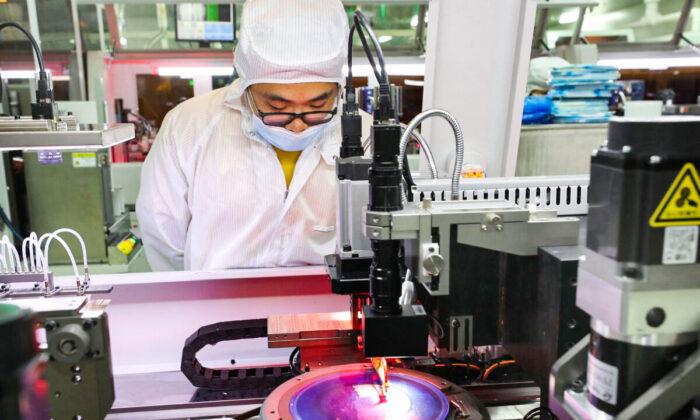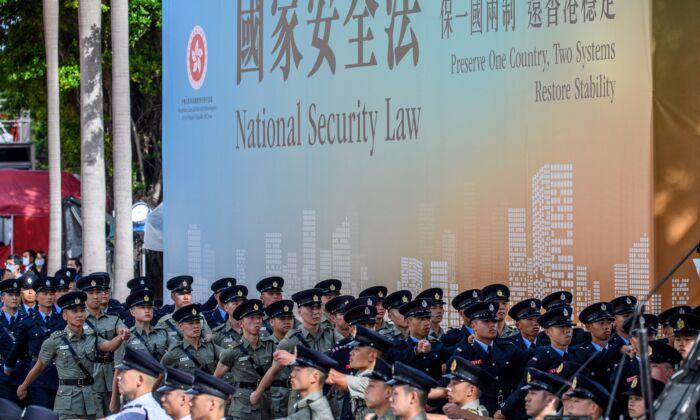China’s environmental watchdog has named four companies that falsified carbon emission reports. As data fraud continues to undermine the country’s ambitious climate goals, a former employee in China’s environment ministry analyzed the causes.
On March 14, China’s Ministry of Ecology and Environment (MEE) said that data verification agencies manipulated reports and falsified testing dates, emissions data, and carbon footprint results. The findings came after a three-month campaign launched by the ministry last October and aimed at verifying the accuracy of carbon emission reports submitted by local entities nationwide.
Beijing-based data verification firm Zhongtan Nengtou Tech Co. was charged with “making false coal samples” and “tampering with and forging test reports.” A second firm, Liaoning Dongmei Testing and Analysis Research Institute, was also charged with tampering with test reports.
In July last year, the regional environment ministry of Inner Mongolia notified a client of Zhongtan Nengtou, Inner Mongolia Erdos High-Tech Materials, of its false carbon emission report. The incident was followed by a three-month campaign to sniff out more emissions data fraud.
From October to December 2021, the national environment ministry arranged for 31 working groups to supervise and inspect the accuracy of carbon data submitted nationwide, especially targeting major technical service and emission control firms in the energy sector, according to China’s state-owned local news.
The short-term investigation unveiled fraudulent practices relating to the four major data verification firms.
Current affairs commentator Li Jie said these measures are all campaigns launched out of political needs, and data fraud is nothing new in China. He believes that this investigative operation is likely pre-planned as the authorities have long known that these companies have a history of falsifying data, and charging them is a ploy to show they are doing something about the emissions.

A state-run energy information and service provider, China Energy Net, said that accurate and reliable emissions data is the premise and foundation of carbon emission trading, a platform launched in July 2021 that aims to reduce companies’ carbon emissions in China. However, data fraud has put the carbon trading markets into chaos.
Gao Fengyi, a former employee in China’s environment ministry and a Ph.D. in environmental protection, explained to The Epoch Times the two primary causes of the chaos in China’s carbon trading market.
“First, the CCP often changes its policies out of political needs. There are no fixed standards, and it is difficult for local governments and enterprises to cooperate. Second, if a region’s performance does not meet the national evaluation standards, it will directly impact the positions of local officials. In order to keep their jobs and salaries, the local government would have to falsify the data,” Gao said.
China’s Ambitious Climate Goals
At the Global Climate Video Summit in April 2021, Chinese leader Xi Jinping claimed that China, the world’s largest emitter of greenhouse gases, would reach a carbon “emissions peak” by 2030, and would begin to reduce emissions and reach “carbon neutrality” by 2060. Xi asked the Western developed countries to provide financial and technical support.Although it claims to incentivize carbon emitters to reduce emissions, before and after ETS launched, cases of carbon data fraud in the Chinese market were found and have continued to surface.
In the first major fraud case disclosed by the environment ministry in July 2021, the data verification firm Zhongtan Nengtou had provided Inner Mongolia Erdos High-Tech Materials with forged coal sample test reports and falsified reports for 11 other companies.
According to China’s state-run environmental news platform, the tampered test reports can reduce Erdos High-Tech Materials’ 2019 emission quota gap by nearly 2 million tons, reducing its expenses by roughly $15.76 million.
Challenges in Going Green
Gao used Japan as an example.Japan’s power plants are primarily nuclear-powered with relatively low carbon emissions, thus, making it easier to achieve carbon peak and carbon neutrality. In contrast, China mainly relies on coal-fired power plants, the primary source of emissions. In addition, its northern provinces also rely on coal for heating. Therefore, it would be challenging and costly for China to adjust its energy production methods to become greener.

Unlike Japan, China heavily neglects the environmental protection aspect of its many operations, including constructing its wastewater treatment facilities, according to Gao.
“China’s environmental protection facilities are just for show. For example, in the sewage discharge fees they collected from its citizens, only 20 percent are actually allocated for wastewater treatments, of which 7 percent are spent on constructing wastewater treatment facilities, and the remaining 13 percent are bonuses for its employees,” Gao said.
“[Can China] achieve carbon peak by 2030? It’s impossible,” Gao said. “To be precise, it’s not that the CCP can’t do it. It’s that it won’t do it.”
Carbon Neutrality refers to achieving net-zero carbon dioxide emissions. This can be done by balancing emissions of carbon dioxide with its removal (often through carbon offsetting) or by eliminating emissions from society (the transition to the “post-carbon economy”). At the United Nations General Assembly in September 2020, Xi said that China, as the world’s largest emitter of greenhouse gases, would reach carbon neutrality by 2060.
Emission Peak refers to China’s aim to bring its total greenhouse gas (CO2) emissions to a peak by around 2030. However, Xi has also pledged to reduce China’s carbon dioxide emissions by “at least” 65 percent from 2005 levels by 2030.





